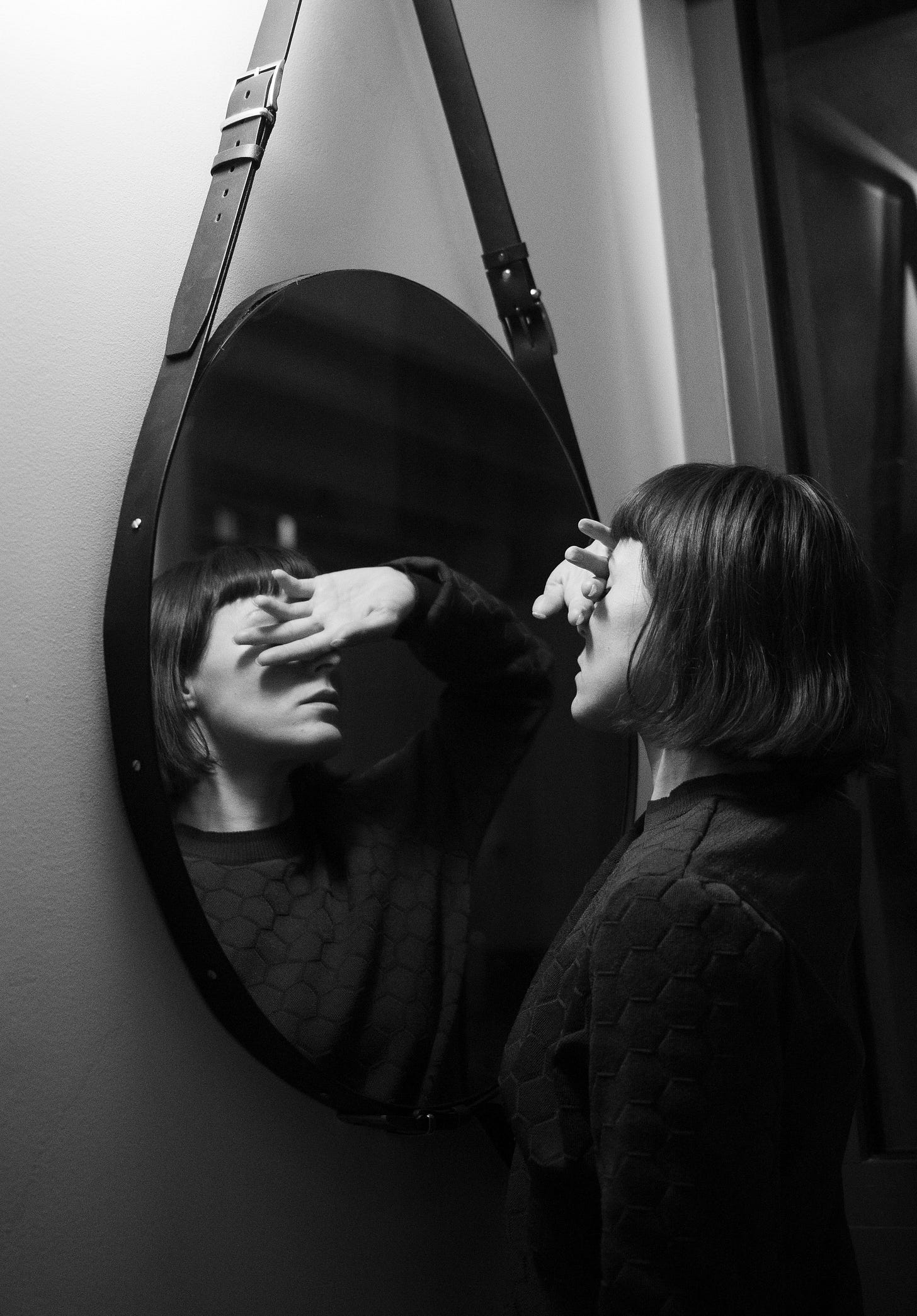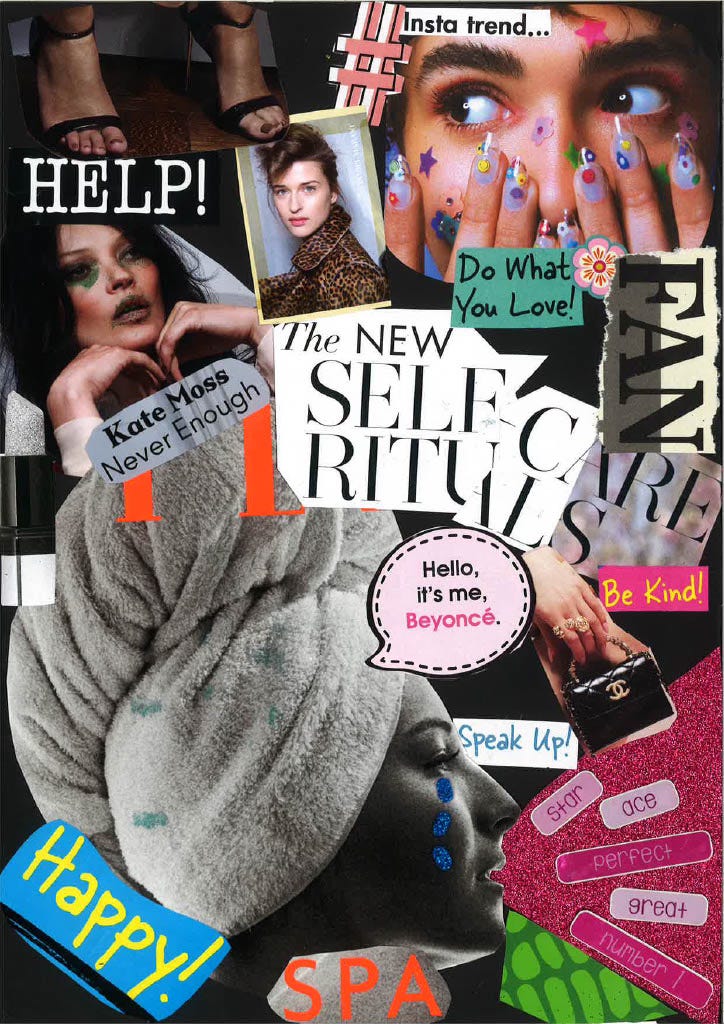How is TikTok’s Visual Weight Trend weighing on our minds?
Decoding the psychology behind the Low vs High Visual Weight trend: its impact on self image and identity
Ever wondered what makeup look suits your face? Or not…
Here it comes, another beauty trend. Another filter. This time, over 66,000 TikTok users have subscribed to the newest kid on the trending block.
The viral sensation has changed the way people are decorating their faces, from sharp black liner, to pretty peach blush.
But what is visual weight theory?
The theory holds presence in art: existing in colour theory and visual fashion. It relies on a piece's ability to attract the eye and pull gravity through its weight.
But let's talk TikTok.
The Low vs High Visual Weight trend has manifested itself on the platform- with the aesthetics being attributed to polar opposite facial structures. In essence, Low Visual Weight consists of smaller, rounder and softer features. Think Gigi Hadid, Selena Gomez, Jennie Kim. On the other hand, individuals with High Visual Weight have striking bone structure. The likes of Angelina Jolie, Zendaya, Dua Lipa. Which would you prefer?
This in turn impacts the makeup and beauty treatments that ‘fit’ your features and what you ‘should’ be taking into your everyday habits.
Low visual = light, natural makeup
High visual = bold, full coverage makeup
Low Visual Weight
Many users prefer the minimalist charm of natural, glowy bases.
CORQ’s most recent Skincare Data Analysis Report in the last quarter of 2023 shows that 50% of the most engaging makeup content consists of radiant healthy looking skin, consistent with features of low visual weight.
High Visual Weight
The other end of the spectrum exerts a powerful allure. The 2016 style of makeup, shall we say.
What psychological effect can these trends have?

Beauty trends on TikTok have triggered inevitable unattainable beauty standards…
But, let’s see what the experts have to say.
I interviewed both Kate Ringwood: Body Image Therapist & Founder of Serendipity Counseling Services and Licensed Mental Health Professional and Founder of Tampa Counseling Place Natalie Rosado to gain their expert opinion on the impact of fleeting beauty trends.
Rosado attributed ‘The larger idea of people - more specifically - women, being influenced by images. The concept has always been there. Before on magazines, TV ads. Nowadays, it’s on social media platforms.’
Rosado categorises the concept of ‘Personal core beliefs that we carry about ourselves deep inside, developed over time by messages received from others. These ‘messages’ are triggered by internalisation of comments in childhood, be that Eg; I’m not pretty or attractive enough. This person is getting attention on social media. In what ways can I get close to and emulate that? the way that they interact with the world/ the lens they look through will be influenced by this personal core belief.’
I believe this is how trends take off and embed themselves deep down inside.’
Ringwood further suggests that this is when the toxicity comes in:
‘The thinking goes to I need to be like them and how can I change myself in order to fit in’
‘Through these trends, a sense of shame can be internalised: something is wrong with me, causing isolation and restriction- mental and physical.’
Whilst the allure of these visual aesthetics may be harmless at surface level, it’s vital to maintain an open mind to the effects on each individual.
What can we do to help?
Rosado recommends identifying the top five personal values that you do not waiver on. She suggests always going back to these as tools to prevent from people-pleasing and becoming unauthentic.
Techniques and tools for those negatively impacted by comparison culture and social media trends can benefit from:
Short term:
Address TikTok For You page algorithm: delete followers whose content triggers you or perpetuates unhealthy practices or thoughts
Set up barriers and boundaries: delete your accounts/apps and remove yourself from the space
Habit replacement or behaviour modification: decreasing social media, increasing positive
Long term:
Identify patterns of unhealthy themes in content consumption
Speak to mental health professional about internalised causes of attraction to this type of content
As we scrutinise the digital space we reside in, it becomes evident that these trends not only reflect societal beauty standards, but also mould our perceptions of self-identity.
Are we just overthinking it all?
Head of Beauty at CORQ Arabella Johnson says; ‘TikTok beauty trends are often so fleeting that you could argue the speed at which trends are replaced is making the next generation slightly immune to the chaos of it all.’

It’s clear that every swipe shapes not just our feeds, but also our sense of self. So, next time you find yourself immersed in the latest hashtag, take a moment to pause and reflect on how it has an effect on you.
Take the weight off of your future self.
If you feel affected by any of the subjects discussed in this feature, please get in contact with a licensed professional.


